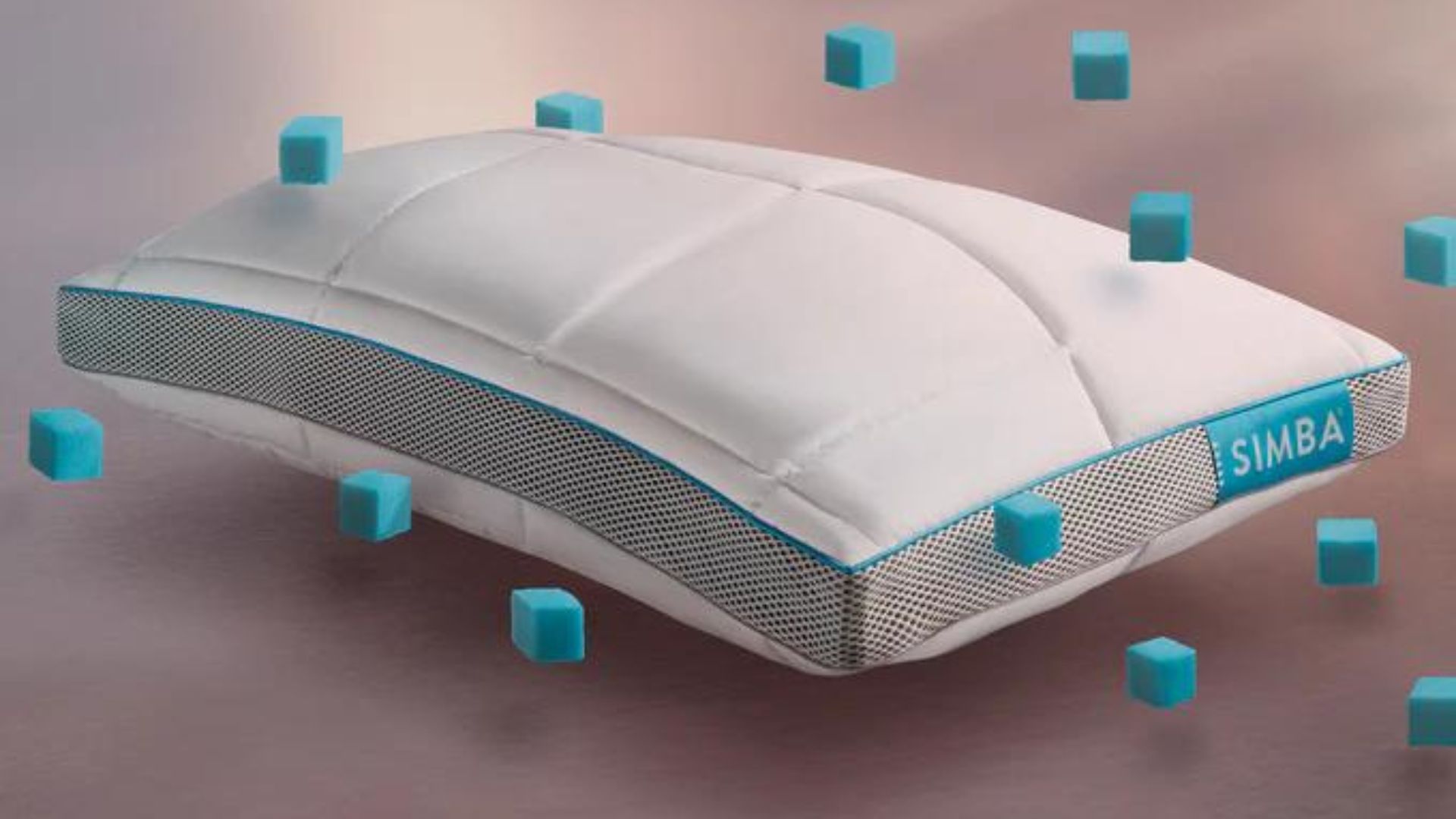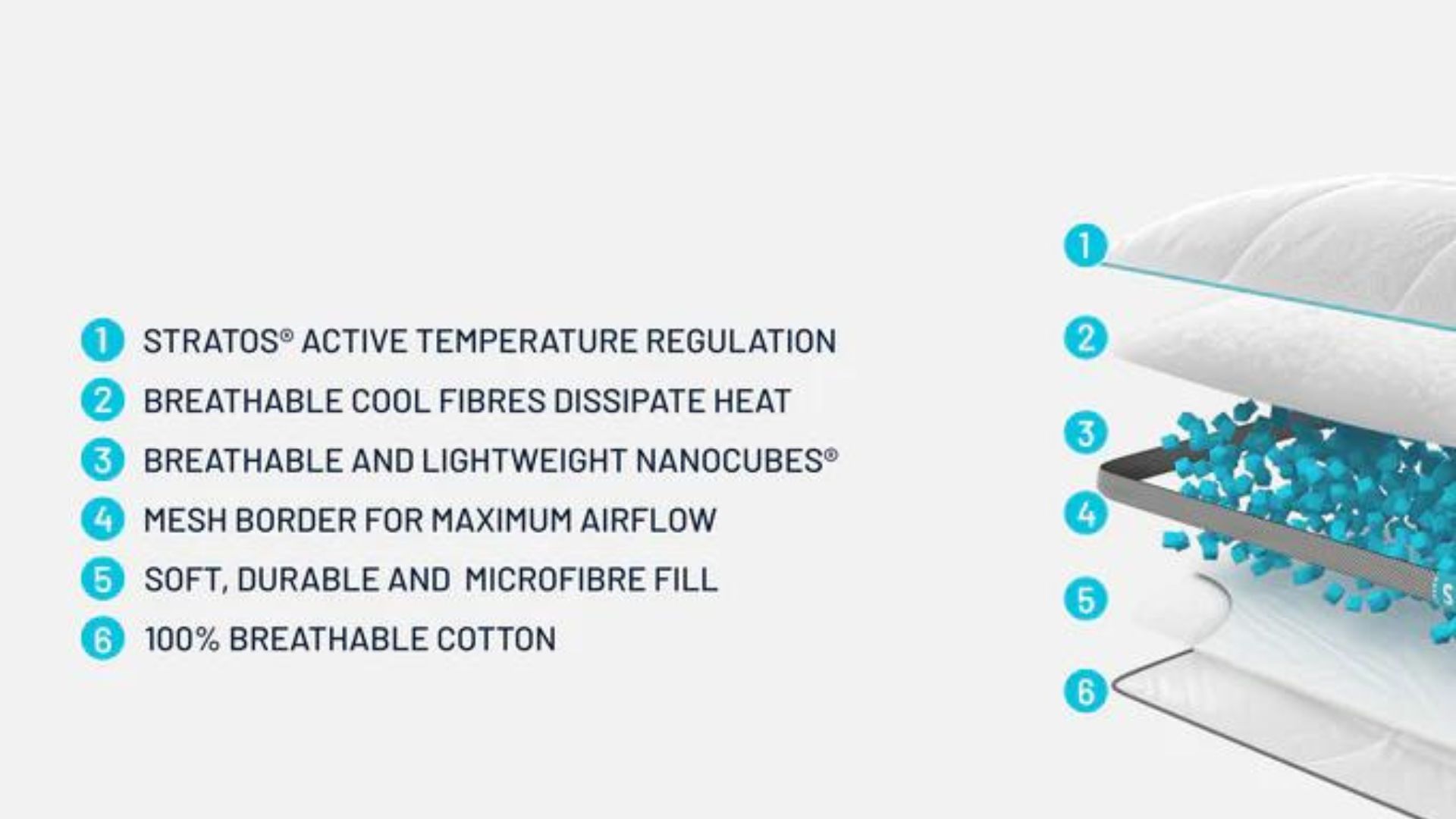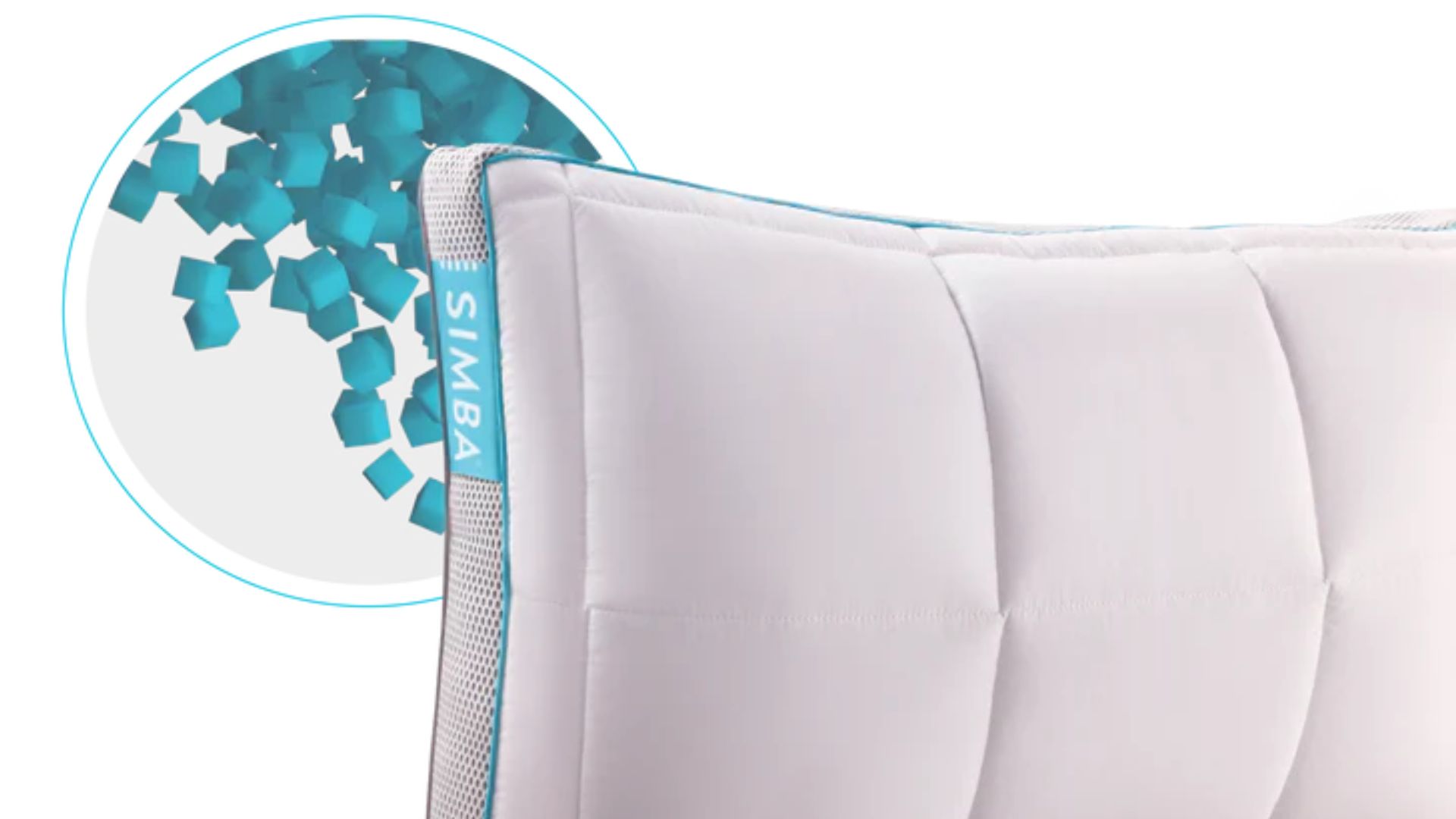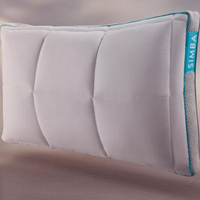I've been sleeping on an adjustable pillow for a month — here are 3 things to know before buying
The Simba Hybrid Pillow provides customised comfort, but here's what you need to know before buying

If you're looking to add customisable comfort to your bed, adjustable pillows make a great addition to your sleep set up. From height and softness, these innovative pillows are ideal for those looking to create their own optimum neck and back support.
Like some of the best mattresses, the best pillows offer customizable comfort and support. Keen to no longer overlook my head and neck support in my quest for a comfortable night's sleep, I decided to try the Simba Hybrid Pillow. This is an adjustable memory foam pillow designed to give sleepers customised cushioning and cool place to rest their head.
I started sleeping on the Simba Hybrid Pillow to see whether adjustable pillows are worth the hype. One month on from sleeping on my first ever adjustable pillow, here are three things that I've discovered about these innovative accessories — and what I think you should know before you try them out.
What is an adjustable pillow?
Adjustable pillows are some of the best pillows on the market as they allow you to tailor their height and softness by manually adding or removing their filling. You simply unzip the pillow's cover and remove or add the fill until it meets your preferred height or plumpness. The filling can be anything from memory foam cubes to stackable sleep pads. They are usually contained within a breathable cotton cover for a cool sleep surface.
However, their impressive features mean that adjustable pillows are a lot more expensive than your standard ones. MSRPs can be anywhere from £25 to £200 for a single pillow, with most adjustable pillows priced at over £50.
The adjustable pillow I’ve been sleeping on
The pillows I'm used to sleeping on are non-adjustable, and are usually filled with hollowfibre, a type of synthetic polyester stuffing usually found in most duvets, pillows, and plush toys.
While they've always provided me with a nice, soft place to rest my head, I do find they lose their plumpness over time and need to be replaced quite often once they become too soft. I wondered if an adjustable pillow, where you can stuff (or remove) as much filling into it as you like, would help to maintain a soft, plump pillow.
There are lots of adjustable pillows on the market, but the Simba Hybrid Pillow (launched back in 2017) is a standout thanks to its trademark cooling technology and sustainable technology.

The pillow comes with a breathable 100% cotton cover infused with Simba's very own Stratos heat control, a cooling technology that makes the pillow's top surface cool-to the touch. This cover encases cushioning, machine-washable sleeve made of the brand's trademark heat-dissipating Renew Bio fibres for sustainable, biodegradable comfort.
Unzip this sleeve and that's where you'll find the filling: little squishy memory foam cubes called Nanocubes, whose shape allows for more airflow than standard memory foam. If you feel like the pillow isn't at the right height or level of plumpness, you simply remove or add as many Nanocubes as you want until you've reached your desired height and softness. The pillow comes with a recycled storage bag, so you can store all the cubes you've removed from the pillow.
The Simba Hybrid® Pillow: from £109 at Simba Sleep
The Simba Hybrid Pillow is one of the most well-known adjustable pillows on the market thanks to its trademark technology that provides both cradling comfort and heat control. With its Nancocube technology, you can customise the height of this pillow to suit your needs by either removing or adding small memory foam cubes. There's currently no sale on this pillow, but it comes with free shipping, 14-day returns, and 15% off your first order.
The 3 things I discovered when first using an adjustable pillow
1. Establish your sleep style first
Not long after receiving my Simba Hybrid Pillow, Simba sent me an explainer email going over how to use the adjustable pillow correctly. I've never used a pillow before that came with instructions before, so I decided to follow the email's advice closely. It explained how the pillow's height should be adjusted according to your preferred sleep position:
- Stomach sleepers need softer, flatter pillows to keep their spine aligned with the head, so you should remove around eight to 10 handfuls of Nanocubes.
- Back sleepers need medium-firm support so their head is slightly raised for optimal spine alignment, so they should remove four to six handfuls of Nanocubes.
- Side sleepers need a firm, higher pillow so their head is raised in line with the spine, so shouldn't remove any Nanocubes.

2. There's no exact science to adjusting the height
While your sleep style can give you a rough guide on how high or low your pillow should be, there's no magic amount of filling that's right for every back sleeper or a an exact pillow height that works for all side sleepers. It involves a lot of fine-tuning.
I'm a combination sleeper, and I sleep on both my back and side. When I first started using the pillow, I decided to leave the pillow as it was when it was arrived (as per the advice given to side sleepers) but this was way too high. My shoulders weren't broad enough to handle that height when side sleeping, while my head was tilted at an unhealthy angle when back sleeping. The "handful" measurement used in the email was very vague, too, because how much is a handful, exactly?
In the end, I decided to keep adding and removing cubes until I reached a height that works for me. If you're unsure of how high you want your pillow, use your favourite cushion or pillow as inspiration.
3. Memory foam provides more squishiness
While you can get adjustable pillows where the filling is stackable hollowfibre sleeping pads (so basically like a pillow version of Russian nesting dolls), most adjustable pillows contain memory foam, which are much different to standard pillows with polyester stuffing. You may find your head being cradled, and there's a sink-in softness that contrasts with the bouncy support of the basic pillow that you're probably used to.
Pros and cons of an adjustable pillow
The main advantage of an adjustable pillow is the customisable comfort and support that you can't get with standard pillows. There's also a longer shelf life, as you can add more filling if you feel like the pillow is loosing its plumpness. There's also more cradling comfort (if your adjustable pillow uses memory foam) which you're unlikely to get from basic polyester-fill pillows. You can also adjust your pillow to fit any temporary arrangements or conditions, such as supporting a sleep injury or accommodating guests.
However, there are also some drawbacks. It does require a lot of fine-tuning until you get to your desired height, which can be tricky if you're a combination sleeper or simply don't know your dominant sleep style. There's also the question of whether anyone really needs an adjustable pillow. For instance, Simba suggests that side sleepers don't remove any filling from the Simba Hybrid Pillow as it's at the ideal height for that position, which may lead some to wonder why they don't just purchase an ordinary firm pillow.
Should you buy an adjustable pillow?
An adjustable pillow is great if you're unsure of what height you need for optimal comfort or if you're dealing with neck aches or an injury. However, make sure you are buying the right kind of adjustable pillow. For example, if you're buying a memory foam adjustable pillow, make sure you like the cradling, squishy feeling and that it comes with cooling features to offset the heat-trapping tendencies of memory foam.
There's also a question of whether some people need an adjustable pillow, especially as there are many basic, inexpensive pillows available in a lot of stores that are designed especially for certain sleep positions. As for me, now that I've fined-tuned my pillow to suit my own sleep style, I plan on sticking with it.
Sign up to get the BEST of Tom's Guide direct to your inbox.
Get instant access to breaking news, the hottest reviews, great deals and helpful tips.

Frances Daniels is a PPA-accredited journalist and Sleep Staff Writer at Tom's Guide with an MA in Magazine Journalism from Cardiff University. Her role includes covering mattress and sleep news and writing sleep product reviews and buyer's guides, including our Best Hybrid Mattress 2025 guide. She is hugely interested in the relationship between good sleep and overall health, interviewing a wide array of mattress and sleep experts to create well-informed articles about important topics such as nutrition, sleep disorders (from sleep apnea to night terrors), lucid dreaming, sleep hygiene, and mattress care. She is also our specialist on mattress toppers — producing mattress topper reviews and taking care of our Best Mattress Toppers 2025 guide — and takes the lead on all content related to fiberglass-free mattresses for a clean, non-toxic sleep. Outside of Tom's Guide, she has written for Ideal Home, Homes & Gardens, and Marie Claire.

